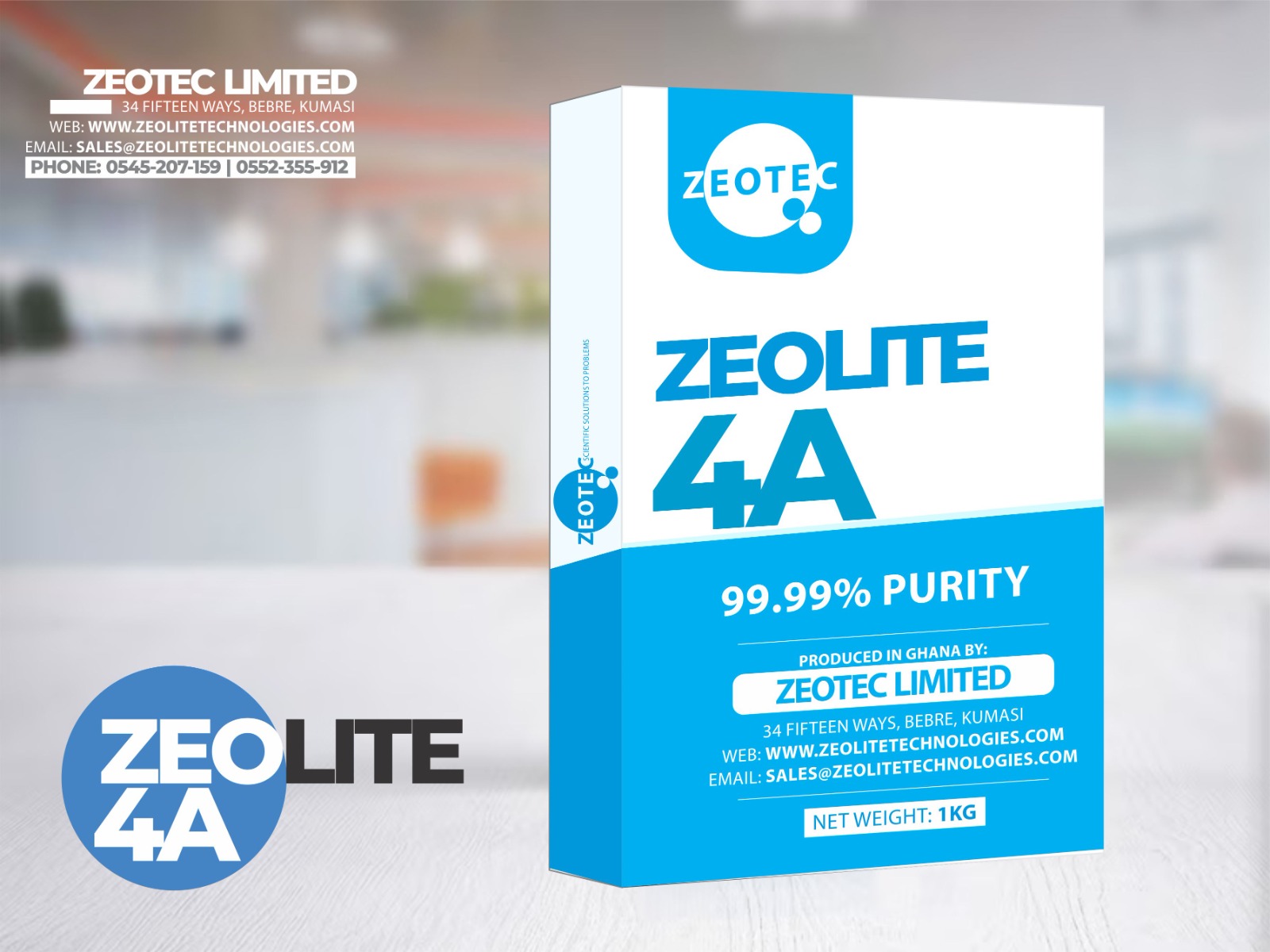ZEOLITE 4A
Each of these zeolite types has specific properties that make them valuable in various industrial applications. Their unique pore structures and acidity levels make them versatile catalysts and adsorbents in processes ranging from petroleum refining to environmental remediation. The choice of zeolite type depends on the particular requirements of each application.

ZEOLITE 4A
Details
Zeolite 4A
Properties :
- Pore Size : About 4 angstroms (0.4 nm).
- Ion Exchange : Selective for calcium and sodium ions.
- Adsorption : Effective for adsorbing moisture and polar molecules.
- Structure: Cubic in nature.
Applications:
- Detergents: Key component in phosphate-free laundry detergents. It acts as a water softener and improves performance.
- Asdsorbent: Used as a desiccant to remove moisture from gases and liquids.
- Catalyst: Sometimes used as a catalyst support in various chemical reactions.
Properties:
- Pore Size : About 5 angstroms (0.5).
- Ion Exchange : Selective for calcium, sodium, and potassium ions.
- Adsorption: Particlararly effective for adsorbing molecules smaller than pore size .
- Structure: Cubic with larger cavities compared to 4A.
- Gas Separation: Used for the separation and purification of gases, such as the removal of cardon dioxide and water from air.
- Petroleum Refining: Used in the petroleum industry for adsorbing water, hydrogen sulfide, and other impurities.
- Dehydration : Applied in air and gas drying applications.
Zeolite 13X
Properties:
- Pore Size: About 10 angstroms(1.0 nm).
- Ion Exchange: Suitable for calcium, sodium, and potassium ions.
- Adsorption: Suitable for adsorbing larger molecules and polar compounds.
- Structure: Cubic with larger cavities compared to 4A and 5A.
Application:
- Gas Separation: Used for the separation and purification of gases, such as the removal of water, carbon dioxide, and sulfur compounds from natural gas.
- Air Separation: Applied in air separation units to produce high-purity oxygen and nitrogen.
- Dehydration: Used for drying of various gases and liquids.
ZEOLITE Y (also known as FAU or Faujasite)
Properties:
- Pore Size: Variable, depending on the cation exchange form (e.g., sodium or rare earth metals).
- Ion Exchange: Highly versatile in ion exchange.
- Adsorption: Suitable for adsorbing large molecules and hydrocarbons.
- Structure: Consists of large cavities and supercages.
Application:
- Catalysis: Used as a catalyst and catalyst support in the petrochemical industry for cracking and hydrocracking processes.
- Adsorbent: Used for adsorbing hydrocarbons, nitrogen oxides, and volatile organic compounds in emission control and pollution abatement.
- Separation: Applied in separation processes, including the separation of xylene isomers in the petrochemical industry.
Zeolite Mordenite
Properties:
- Pore Structure: One-dimensional pore structure with channels formed by 12-menbered rings.
- Acidic Sites: it contains acidic sites that make it suitable for acid-catalyzed reactions.
- Si/AI Ration: Can vary, influencing its acidity and ion exchange properties.
Application:
- Catalysis: Used as a catalyst reactions, including alkylation, isomerization, and hydrocracking in the petrochemical industry.
- Adsorption: Adsorbs small molecules and certain cations, making it useful for remove impurities from liquids.
Zeolite ZSM-5 (Zeolite Socony Mobil-5)
Properties:
- Pore Structure: Three-dimensional pore structure with channel formed by 10-mebered rings.
- Acidic Sites: it is known for its strong acidity, making it a versatile catalyst.
- Si/AI Ration: The Si/AI ration can vary, affecting its acidity and catalytic activity
Applications:
- Extensively used in the petrochemical industry, for catalytic processes such as cracking, isomerization, and zeolite-based catalysts.
- Adsorption: Adsorbs a range of molecules, including volatile organic compounds (VOCs) and polar molecules.
- Shape Selective Catalysis: Its unique structure allows for shape-selective catalysis, which is valuable in the production of chemicals and fuels.
Zeolite Beta
Properties:
- Pore Structure: Has three-dimensional pore structure with channels formed by 12-menbered rings.
- Acidic Sites: It has both strong and weak acidic sites, making it versatile for various reactions.
- Si/AI Ratio: The Si/AI ratio can vary, influencing its acidity and catalytic properties.
Applications:
- Catalysis: Used in several catalytic processes, including hydrocracking, isomerization, and alkylation in the petrochemical industry.
- Adsorption: It can adsorb molecules like heavy metals and large organic molecules.
- Selective Sorption: Its shape-selective properties are beneficial for separating molecules based on size and shape.
